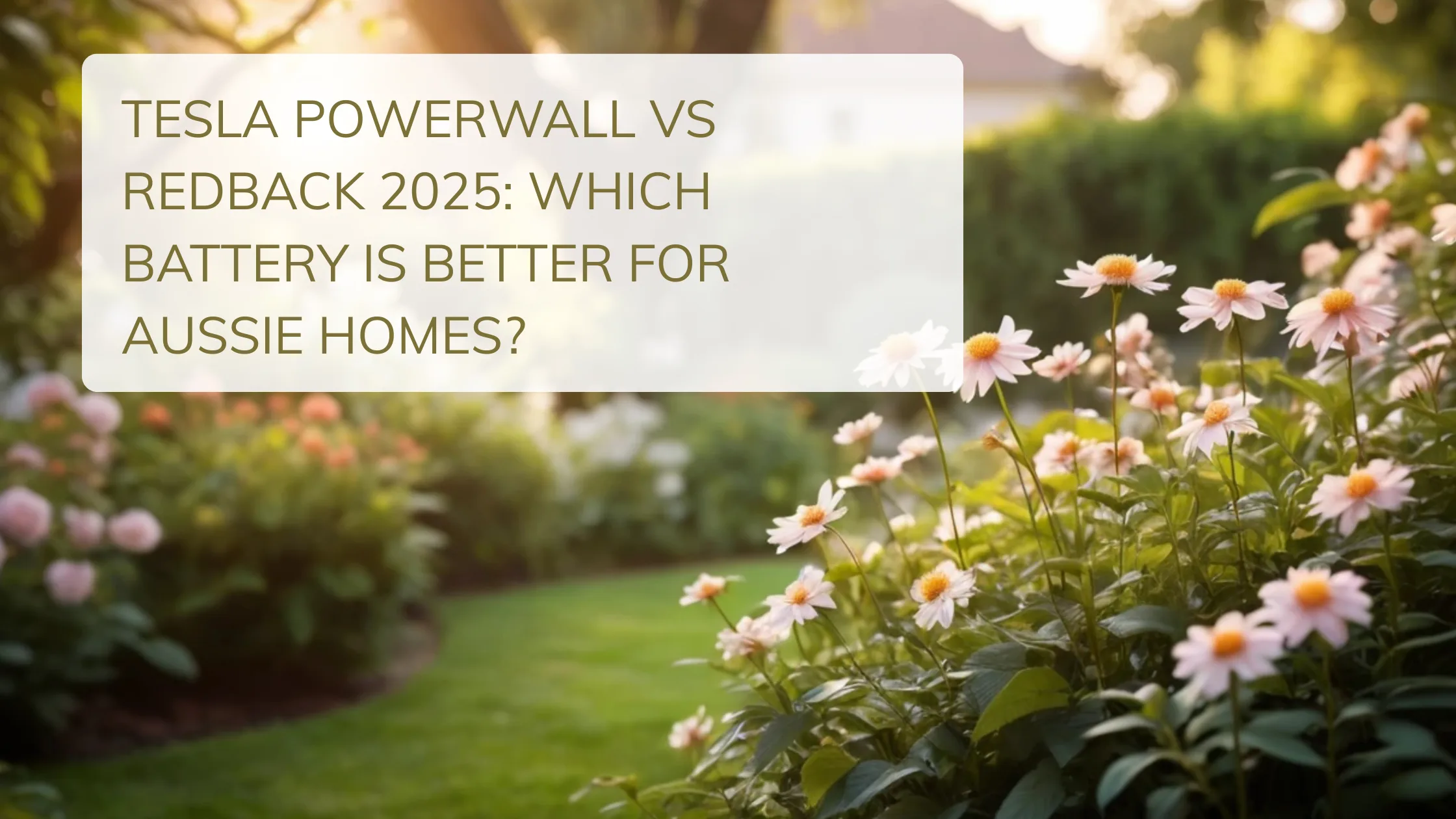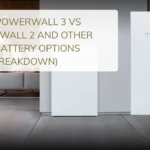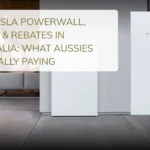Alright, so if you’ve been eyeballing a home battery setup lately — maybe because of rising bills or just wanting to go greener — you’ve probably stumbled across two big names: the Tesla Powerwall and the Redback Smart Hybrid System.
I was in the exact same boat around February this year. I already had solar panels installed back in 2022 here in Perth, and they were doing great… but I kept wondering what would happen if I could store the excess juice instead of sending it back for peanuts.
So yeah, I started looking into batteries. It came down to two choices for me (and a lot of other Aussies): Tesla vs Redback.
This article’s not a technical spec sheet — it’s more like a mate telling you what I found, what I heard from neighbours, and how I made my own choice.
Tesla Powerwall vs Redback: The Basics
Let’s break down the basics real quick — just so we’re all on the same page.
Tesla Powerwall 2 (2025 Version)
- 13.5kWh usable capacity
- 90% round-trip efficiency
- AC-coupled
- 10-year warranty (unlimited cycles now in AU)
- Around $12,000–$15,000 installed
Redback Smart Hybrid System
- 7.2kWh to 28.4kWh scalable (modular)
- Integrated hybrid inverter
- Australian company
- 10-year warranty
- Starts around $9,000 installed
My Perth Battery Hunt (The Real-World Stuff)
So back in Feb, my power bill hit $310 even with solar. Why? Because most of our energy usage was after 5pm — once the sun had clocked off for the day. That’s when I started looking into batteries.
I called up three installers. Two pushed the Powerwall. One pitched Redback hard. And here’s the thing — all three gave me totally different advice.
My mate Sarah from down in Rockingham actually got a Powerwall installed in January. She said:
It looks like something out of a sci-fi movie. And the Tesla app? Freakin’ addictive. I check it more than I check the weather.
But she also mentioned the price nearly made her cry. After install and everything, it was $14,800. Yikes.
Cost Breakdown
Here’s what I got from quotes around WA (actual figures from 2025):
| System | Total Installed Cost | Notes |
|---|---|---|
| Tesla Powerwall 2 | $13,800 – $15,200 | Includes backup gateway |
| Redback 9.6kWh system | $9,400 – $10,200 | With hybrid inverter |
| Redback 14.2kWh system | $11,500 – $12,300 | Scalable battery pack |
Tesla’s price includes brand hype. No doubt. But hey — it’s also more plug-and-play. With Redback, you need to check your inverter type and system compatibility more carefully.
Performance in the Real World
Now here’s where it gets interesting. Performance isn’t just about specs — it’s about how much energy you’re actually storing, using, and saving.
Sarah (with the Tesla) says she’s been able to cover 95% of her home’s daily usage with the Powerwall. She only pulls from the grid during back-to-back rainy days.
Another neighbour of mine, Jason in Bassendean, went with Redback. He’s got a 9.6kWh setup and said:
Mate, I paid 4 grand less than my brother-in-law who got the Tesla. We both run aircon and pool filters. I’m not seeing the difference on the bills.
So yeah — for normal homes, both batteries deliver solid performance. Tesla may squeeze out a bit more in efficiency, but Redback’s local support and modularity are huge pluses.
The App Experience (Surprisingly Important)
Okay, I didn’t expect this to be a big deal, but it actually is.
The Tesla app is super polished. It’s visual, responsive, and shows solar generation, battery storage, grid usage — all in one slick interface.
Redback’s app is… fine. It’s not ugly, but it’s not winning design awards either. It gets the job done, but the Tesla app feels more like something Apple would make.
Backup Power (AKA When the Grid Goes Out)
Now THIS is where Tesla wins.
The Powerwall 2 (with Backup Gateway 2) automatically kicks in during outages — and does it fast. Most people don’t even notice the power went out until they hear their neighbour’s fridge beeping.
Redback can do backup too, but you’ll need to install an external changeover switch or go with their Smart Hybrid with backup circuit, which adds to the cost.
So… Which One Did I Choose?
I ended up going with the Redback 14.2kWh system. Why?
- It was $3,200 cheaper than Tesla.
- Local support (they’re based in Brisbane).
- The hybrid inverter allowed me to tidy up the install — fewer boxes on the wall.
- I don’t care if the app’s a bit “meh.” I just want lower bills.
So far? It’s been amazing. Last quarter, my bill was $76 — and that’s with a family of four running two aircons, Netflix marathons, and a lot of after-hours power use.
Final Verdict: Tesla or Redback in 2025?
Choose Tesla Powerwall If…
- You want sleek design and premium feel
- You care about fast, full backup during outages
- You don’t mind paying a bit more for brand + app
Choose Redback If…
- You want better value per kWh
- You like modular scaling options
- You want Aussie-made gear with local support
- You already have a compatible hybrid inverter
Both are great systems. Neither is a “bad choice.” It just depends on what you care about more — brand and polish, or practicality and price.
Last Tip Before You Decide
Always get 2–3 quotes, and ask your installer these 3 things:
- Is the system AC or DC-coupled?
- What happens during a blackout?
- What’s the total out-of-pocket cost after rebates?
Also, ask about state battery rebates — WA, SA, and VIC often have special offers that can slash prices.
Want My Quote Template or Installer Info?
I’ve made a simple Google Sheet to compare battery quotes — columns for price, warranty, features, and questions to ask. If you want a copy, drop your email in the comments or shoot me a message.
Happy saving — and may your aircon run free this summer.










